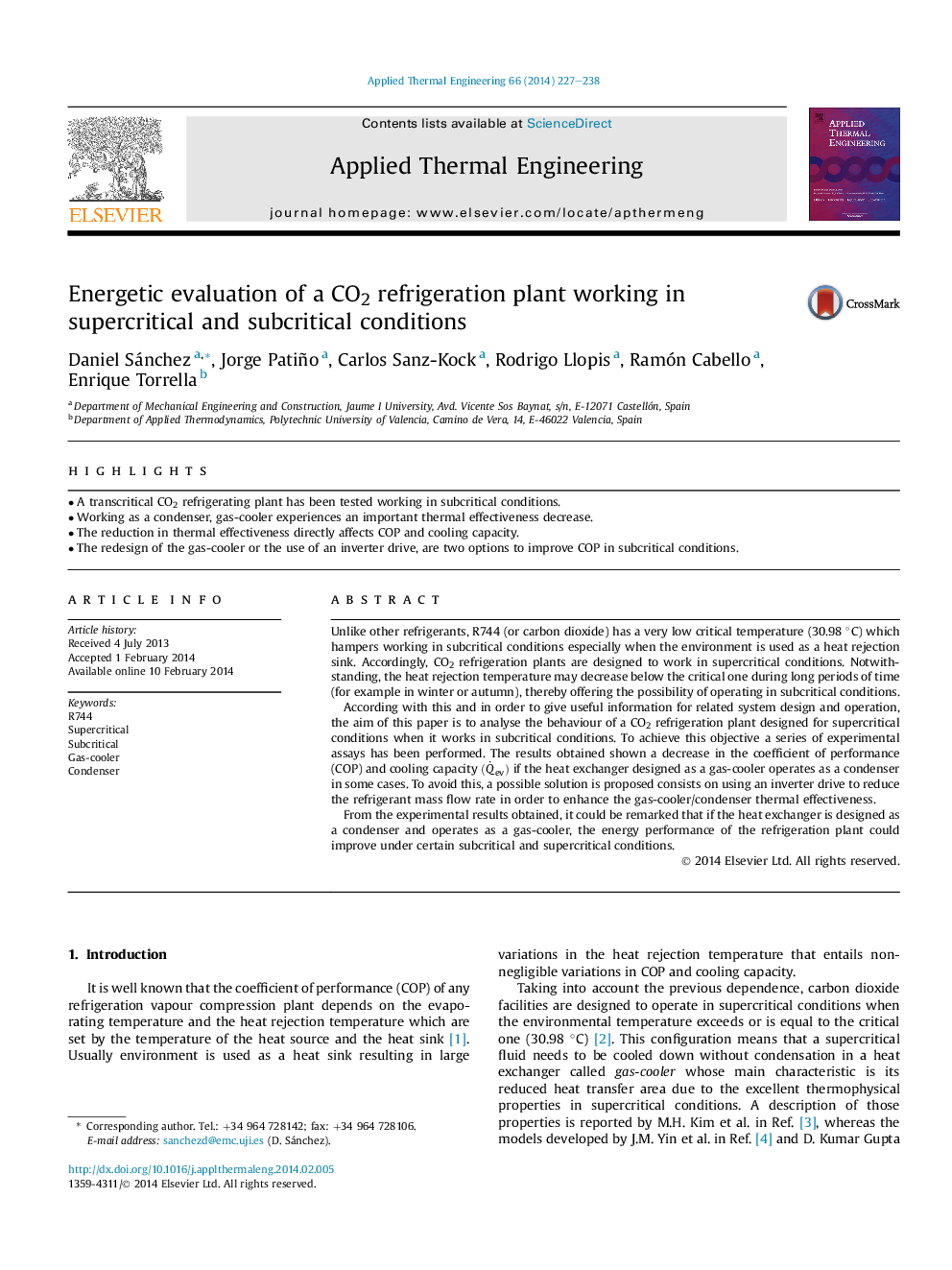| Article ID | Journal | Published Year | Pages | File Type |
|---|---|---|---|---|
| 646675 | Applied Thermal Engineering | 2014 | 12 Pages |
•A transcritical CO2 refrigerating plant has been tested working in subcritical conditions.•Working as a condenser, gas-cooler experiences an important thermal effectiveness decrease.•The reduction in thermal effectiveness directly affects COP and cooling capacity.•The redesign of the gas-cooler or the use of an inverter drive, are two options to improve COP in subcritical conditions.
Unlike other refrigerants, R744 (or carbon dioxide) has a very low critical temperature (30.98 °C) which hampers working in subcritical conditions especially when the environment is used as a heat rejection sink. Accordingly, CO2 refrigeration plants are designed to work in supercritical conditions. Notwithstanding, the heat rejection temperature may decrease below the critical one during long periods of time (for example in winter or autumn), thereby offering the possibility of operating in subcritical conditions.According with this and in order to give useful information for related system design and operation, the aim of this paper is to analyse the behaviour of a CO2 refrigeration plant designed for supercritical conditions when it works in subcritical conditions. To achieve this objective a series of experimental assays has been performed. The results obtained shown a decrease in the coefficient of performance (COP) and cooling capacity (Q˙ev) if the heat exchanger designed as a gas-cooler operates as a condenser in some cases. To avoid this, a possible solution is proposed consists on using an inverter drive to reduce the refrigerant mass flow rate in order to enhance the gas-cooler/condenser thermal effectiveness.From the experimental results obtained, it could be remarked that if the heat exchanger is designed as a condenser and operates as a gas-cooler, the energy performance of the refrigeration plant could improve under certain subcritical and supercritical conditions.
